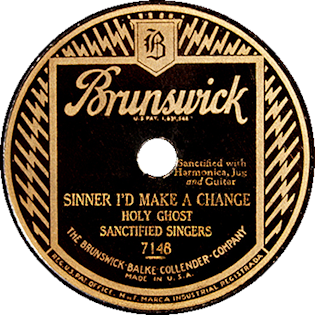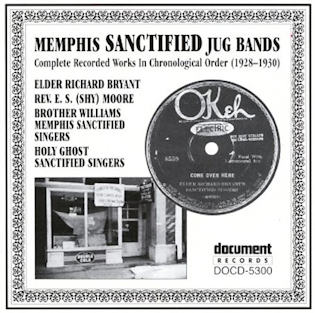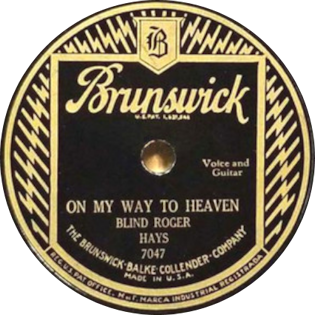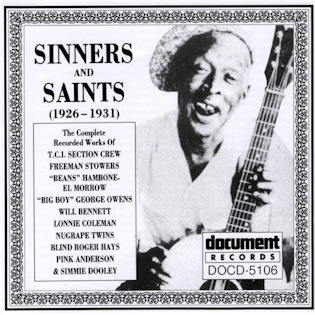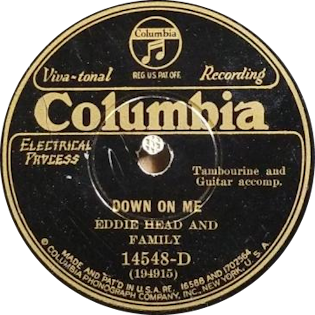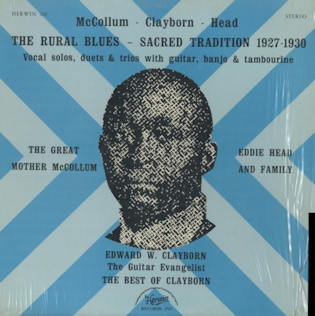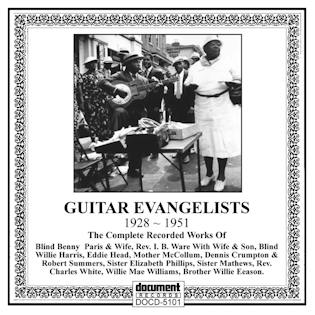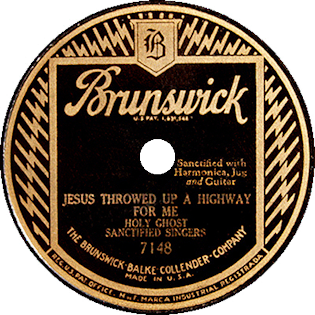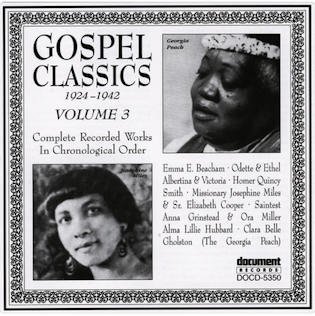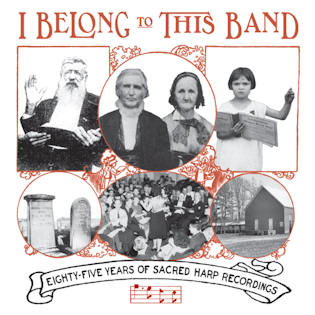 A B C D E F G H I J K L M N O P Q R S T U V W X Y Z
A B C D E F G H I J K L M N O P Q R S T U V W X Y Z
To help with further browsing click on the large ‘Initial’ to return to the Early Gospel Singers Introduction, or click another initial to take you to details of more early gospel singers.
____________________________________________________________________________________________________________________________
| Name: | Vera Hall |
| Location: | Sumter County, AL |
| Born: | 6th April 1902 |
| Died: | 29th January 1964 |
| Biography Synopsis: | Adell Hall Ward, better known as Vera Hall was an American folk singer, born in Livingston, Alabama. Best known for her 1937 song, “Trouble So Hard”, she was inducted into the Alabama Women’s Hall of Fame in 2005.
Hall was born at Paynesville, Sumter County, Alabama, near Livingston, and sang her entire life. Her mother and father, Agnes Efron and Zully Hall, taught her songs such as “I Got the Home”, “In the Rock” and “When I’m Standing Wondering, Lord, Show Me the Way”. Hall married Nash Riddle, a coal miner, in 1917 and gave birth to their daughter, Minnie Ada. Riddle was killed in 1920. In the late 1930s, Hall’s singing gained national exposure. John Avery Lomax, ethnomusicologist, met Hall in the 1930s and recorded her for the Library of Congress. Lomax wrote that she had the loveliest voice he had ever recorded. The BBC played Hall’s recording of “Another Man Done Gone” in 1943 as a sample of American folk music. Earlier, The Library of Congress played the song in commemoration of the 75th Anniversary of the Emancipation Proclamation in 1937. In 1945, Hall recorded with Byron Arnold. In 1984, the recordings were released as a collection of folk songs entitled Cornbread Crumbled in Gravy. According to recording artist and writer Stephen Wade, “‘Another Man Done Gone’ became Vera Hall’s most celebrated performance. Carl Sandburg recalled listening to it more than a dozen consecutive times during a January 1944 visit to Lomax’s Dallas home….” In 1948, with the help of Alan Lomax, Hall traveled to New York and performed on May 15 at the American Music Festival at Columbia University. During the course of this trip, Lomax interviewed Hall on several occasions, later stating “Her singing is like a deep-voiced shepherds flute, mellow and pure in tone, yet always with hints of the lips and the pleasure-loving flesh…The sound comes from deep within her when she sings, from a source of gold and light, otherwise hidden, and falls directly upon your ear like sunlight. It is a liquid, full contralto, rich in low overtones; but it can leap directly into falsetto and play there as effortlessly as a bird in the wind.” Hall died in January 1964 in Tuscaloosa, Alabama. Today, her work still garners attention. Prized by scholars and folk song enthusiasts, Hall’s recordings include examples of early blues and folk songs that are found nowhere else. Lomax’s son, Alan, also championed Vera Hall, bringing her to New York for a performance at Columbia University in 1948 and assembling Rainbow Sign, a book based on Hall’s life and stories. A historical marker in Hall’s honor was dedicated on April 21, 2007 in Livingston. Source: Wikipedia extract |
| Most popular song(s): | Spirituals sung with Dock Reed:
“Mourin’ Song,” “Oh, Jesus, Jes’ Write My Name,” “Let Me Ride” Spirituals sung by herself: “I Feel Like My Time Ain’t Long,” “I Believe, I’ll Go Back Home,” “John Saw Dat Number.” |
| References / links: | Encyclopedia of Alabama |
| Images: | 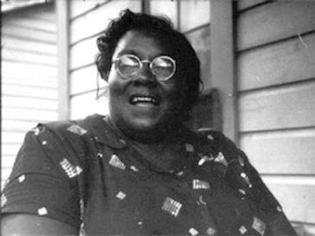 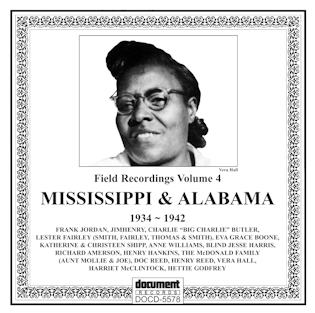 |
| Name: | Hall Johnson / Hall Johnson Negro Choir |
| Born: | 1888 |
| Died: | 1970 |
| Biography Synopsis: | Francis Hall Johnson was an American composer and arranger of African-American spiritual music. He is one of a group—including Harry T. Burleigh, R. Nathaniel Dett, and Eva Jessye—who elevated the African-American spiritual to an art form, comparable in its musical sophistication to the compositions of European Classical composers.
Francis Hall Johnson was born on March 12, 1888, the fourth of six children of Alice Virginia Sansom and William Decker Johnson, who was a bishop in the AME Church. Johnson received an extensive education. He attended the private, all-black Knox Institute and earned a degree from Allen University in Columbia, South Carolina. He also attended Atlanta University, the Juilliard School, Hahn School of Music, and the University of Pennsylvania. As a boy, Johnson was tutored on piano by his older sister, and he taught himself to play the violin after hearing a violin recital given by Joseph Henry Douglass, grandson of Frederick Douglass. Johnson’s debut as a professional violinist occurred in a concert in New York in 1910. He went on to play the violin and viola professionally, including in the orchestra for the 1921 musical, Shuffle Along. Johnson played in the orchestra led by James Reese Europe as it accompanied Vernon and Irene Castle on tour, and he played with the New York Syncopated Orchestra, led by Will Marion Cook in 1918. In time, however, he became more interested in choral music, forming the Hall Johnson Negro Choir, the first of many choral ensembles, in 1925. The group first performed professionally at the Pythian Temple in 1928. Johnson and his choir became renowned through their participation in the 1930 Broadway production of Marc Connelly’s The Green Pastures as well as in national and international tours of the play, radio versions, the 1936 film adaptation, and Hallmark Hall of Fame television broadcasts. Johnson would also go on to arrange music for and conduct his choir in more than thirty feature-length Hollywood films, besides a number of short films and cartoons as well as in Walt Disney’s film Dumbo, specifically in the song “When I See An Elephant Fly”; Johnson himself voiced one of the crow characters, the Deacon Crow. Some members of the choir also provided voices to these characters as well. Johnson wrote Run, Little Chillun, which premiered on Broadway in 1933 and was produced in Los Angeles in 1935 – 1937 under the auspices of the Federal Theater Project. Another production of the folk opera was featured in San Francisco in 1939 as an exhibit of the Works Progress Administration at the Golden Gate International Exposition. Also in 1937, the Hall Johnson Choir was featured in the soundtracks of the Frank Capra film, Lost Horizon , Walt Disney’s Snow White and the Seven Dwarfs and Hal Roach’s Zenobia. In addition to his theatrical work, Johnson wrote the Easter cantata Son of Man, which premiered at New York’s City Center in 1946, the same year that the Hall Johnson Choir sang in Disney’s Song of the South. In 1951, the Hall Johnson Choir was selected by the United States Department of State to represent the United States at the International Festival of Fine Arts held in Berlin, Germany. Johnson wrote of the spiritual: True enough, this music was transmitted to us through humble channels, but its source is that of all great art everywhere—the unquenchable, divinely human longing for a perfect realization of life. It traverses every shade of emotion without spilling over in any direction. Its most tragic utterances are without pessimism, and its lightest, brightest moments have nothing to do with frivolity. In its darkest expressions there is always a hope, and in its gayest measures a constant reminder. Born out of the heart-cries of a captive people who still did not forget how to laugh, this music covers an amazing range of mood. Nevertheless, it is always serious music and should be performed seriously, in the spirit of its original conception. Johnson was fluent in both German and French. Among the singers he coached were Marian Anderson, Robert McFerrin and Shirley Verrett. His arrangements of the spirituals have been recorded by some of the world’s finest artists. Johnson, aged 82, died during a fire at his New York apartment on April 30, 1970. In 1975, Johnson was posthumously honored for his work in films by being elected to the Black Filmmakers Hall of Fame. A 1931 bust of Johnson by Minna Harkavy was shown at an exhibition at the Moscow Museum of Western Art and was bought by the Pushkin Museum in Moscow. In 1934, the Philadelphia Academy of Music recognized Johnson with an honorary doctorate. Solurce: Wikipedia |
| Most popular song(s): | |
| References / links: | Afrocentric Voices |
| Images: | 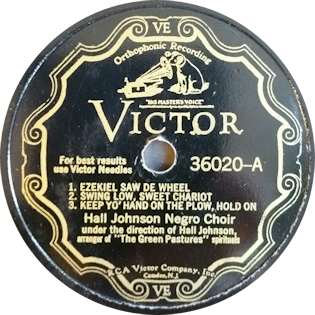 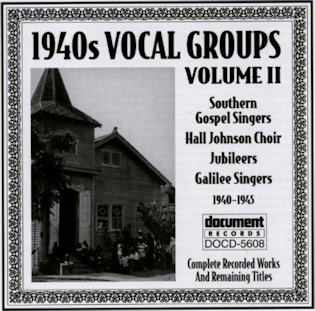 |
| Name: | Hallelujah Joe |
| Location: | |
| Born: | |
| Died: | |
| Biography Synopsis: | |
| Recording career: | |
| Most popular song(s): | |
| Musical Influences: | |
| References / links: | |
| Images: |
| Name: | Blind Willie Harris |
| Location: | ? |
| Born: | ? |
| Died: | ? |
| Biography Synopsis: | An anthology of rural acoustic gospel music, Goodbye, Babylon, released in 2003, included one of the two known recordings by an otherwise undocumented singer named Blind Willie Harris. This piece, “Where He Leads Me I Will Follow,” was recorded in New Orleans in 1929, and in describing it, the authors of the CD liner notes pointed out its “strikingly similar” resemblance to Richard Brown’s 1927 New Orleans recordings. Since then, more discussion has ensued among early blues and gospel collectors and scholars, leading many to state without equivocation that Harris was a pseudonym of Brown’s, although no documents linking the name Harris with Brown have been found.
Source: Wikipedia |
| Recording career: | 1929 |
| Images: | 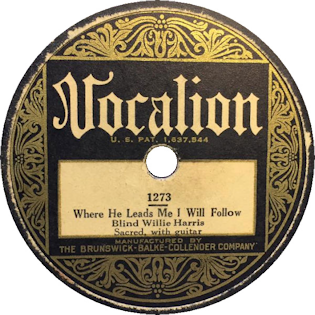 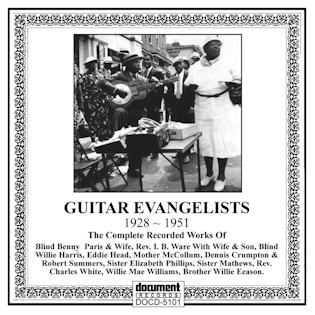 |
| Name: | Goldia Haynes |
| Location: | St. Louis, Illinois |
| Born: | |
| Died: | |
| Biography Synopsis: | Sister Goldia Haynes was an American gospel singer in the COGIC (Church of God in Christ) tradition. Born in East , she signed to Capitol Records in 1950. She died in the 1970s. |
| Recording career: | |
| Most popular song(s): | |
| Musical Influences: | |
| References / links: | |
| Images: |
| Name: | Howard Haney |
| Location: | |
| Born: | |
| Died: | |
| Biography Synopsis: | |
| Recording career: | |
| Most popular song(s): | |
| Musical Influences: | |
| References / links: | |
| Images: | 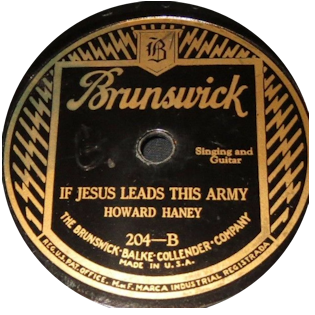 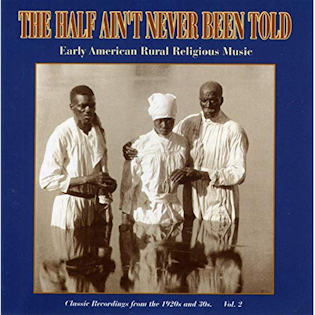 |
| Name: | The Heavenly Gospel Singers |
| Location: | Spartanburg, South Carolina |
| Biography Synopsis: | The Heavenly Gospel Singers originally hailed from Spartanburg, South Carolina, but they first came together in Detroit, Michigan during the 1920s when tenor Fred Whitmore first organized a group of friends into a singing group called the Masonic Glee Club. They gradually grew in popularity, securing gigs as far away as Chicago. At some point, the group changed their name to the Heavenly Gospel Singers. By 1930, however, most of the original group was gone, leaving only Whitmore. In addition, the group consisted of lead singer Roosevelt Fenroy, baritone Henderson Massey, and bass Jimmy Bryant. The group was signed to Bluebird and, on August 7, 1935, made their first recordings. They recorded ten sides at their first session in Atlanta, Georgia, including this recording of “Mean Old World.” They recorded a further ten songs at a second session in 1936. – Radio Screamer (http://radioscreamer.com) |
| Recording career: | 1935 – 1941 |
| Most popular song(s): | “Precious Lord, Take My Hand “. The lyrics were written by Rev. Thomas A. Dorsey (1899–1993), and the melody by George Nelson Allen (1812–1877). The earliest known recording was made on 16th February, 1937 by The Heavenly Gospel Singers. It has now been published in more than 40 languages. – Wikipedia (http://en.wikipedia.org/wiki/Take_My_Hand,_Precious_Lord) |
| References / links: | Cross Rhythms |
| Images: | 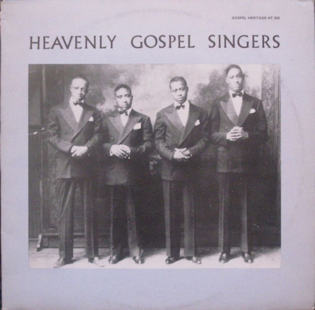 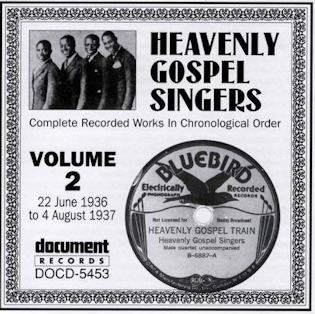 |
| Name: | Hendersonville Double Quartet |
| Location: | ? |
| Born: | |
| Died: | |
| Biography Synopsis: | ? |
| Recording career: | |
| Most popular song(s): | |
| Musical Influences: | |
| References / links: | |
| Images: | 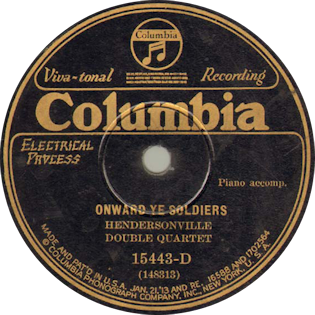 |
| Name: | Laura Henton |
| Location: | |
| Born: | |
| Died: | |
| Biography Synopsis: | On record, Arizona Dranes seems to have been a ground-breaking figure in this respect and was probably the first sanctified artist to record, setting a high standard for the female performers who followed. Laura Henton ably continued this tradition in 1928 and 1929 with the richly powerful vocals set against an instrumental background firmly rooted in a jazz style. Paul Oliver has suggested that the brass bass accompaniment on her first session may be Charlie Dixon, who was recording and performing in the Dallas vicinity around that time. Her session in Kansas City almost one year later was even more jazz flavoured, utilizing the well-known band leader Bennie Moten on piano, pioneering guitarist Eddie Durham, and a string bass player listed as Joe Page. The guitar voicings in particular are most unusual in a gospel context and even today sound fresh and up-to-date. Lord, You’ve Sure Been Good To Me was a logical choice for the first recorded title as it was long a favourite with New Orleans marching bands and jazz groups.
Source: Document Records |
| Recording career: | 1928-1929 |
| Most popular song(s): | |
| Musical Influences: | Arizona Dranes |
| References / links: | Discography of American Historical Recordings |
| Images: | 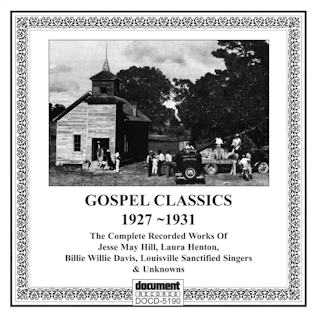 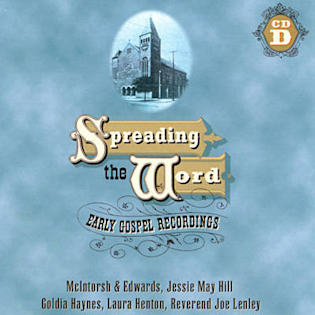 |
| Name: | Rosie Hibler and Family |
| Location: | |
| Born: | |
| Died: | |
| Biography Synopsis: | |
| Recording career: | |
| Most popular song(s): | |
| Musical Influences: | |
| References / links: | |
| Images: |
| Name: | Rev. B. J. Hill & The Jubilee Gospel Team |
| Location: | |
| Born: | |
| Died: | |
| Biography Synopsis: | |
| Recording career: | |
| Most popular song(s): | Lower My Dying Head |
| Musical Influences: | |
| References / links: | |
| Images: | 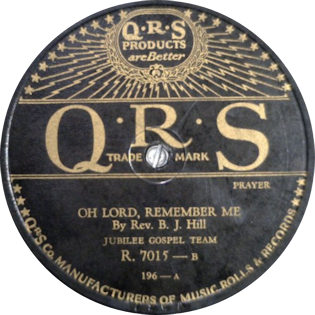  |
| Name: | Jessie May Hill |
| Location: | Crawford, Pennsylvania |
| Born: | 1870 |
| Died: | 1954 |
| Biography Synopsis: | |
| Recording career: | 1927 |
| Most popular song(s): | |
| Musical Influences: | |
| References / links: | Discography of American Historical Recordings |
| Images: |  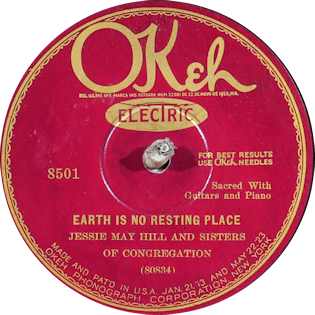 |
| Name: | Sister Clara Hudmon |
| Aka: | The Georgia Peach |
| Location: | Atlanta, GA |
| Born: | 1899 |
| Died: | 1966 |
| Biography Synopsis: | Born in Atlanta, Georgia, Hudmon formed a vocal trio with her brothers Ralph and Luther at an early age, and sang in Reverend J. M. Gates’s congregation at Mount Calvary Baptist Church. Hudmon became very established in the religious community, associating with figures such as Claude Joseph Johnson, who later became a reverend and recorded sermons. At age 16, Hudmon quit school and moved in with Reverend T. T. Gholston, working as a nurse for the Reverend’s ailing wife. Just six months after his wife’s death, Gholston married 18 year-old Hudmon, who assumed the role of surrogate mother to the Reverend’s two children. Church members objected to the circumstances of the union, making the family public outcasts, and resulting in the Reverend resorting to alcoholism. After Gholston attempted to deliver a sermon while intoxicated, the family was ostracized from the community, and relocated to Detroit, then New York City. The couple divorced soon after.
On December 12, 1930, perhaps as a result of a recommendation by Gates, Hudmon recorded for Okeh Records. Joined by Deacon Leon Davis and Sisters Jordan and Norman, individuals who recorded with Gates between 1927-1930, Hudmon completed, among other compositions, her best-known song: a rendition of Reverend Charles Albert Tindley’s hymn “Stand by Me”. As explained in the book Undercurrent: The Hidden Wiring of Modern Music, Hudmon’s “scarred but studied delivery” helped unveil a new era of gospel music centered around the writings of Tindley and Thomas A. Dorsey. Her cover of “Stand by Me” was collected on Harry Smith’s Anthology of American Folk Music, Vol. 4 in 2000, featured as the first genuine gospel song on the compilation album. Hudmon’s other notable song is her take on “When the Saints Go Marching In”, which was recorded both in 1931 and 1932. Hudmon continued recording throughout the 1930s, sometimes credited as Clara Belle Gholston and Clara Gholston Brock or Brook. Her career was bolstered by a string of successful concerts, particularly an appearance at the Radio City Music Hall, in 1939. Throughout the 1940s, Hudmon recorded under the moniker the Georgia Peach, cutting slides for Decca Records, among other record labels. She recorded until 1960 and died sometime in 1966. Hudmon’s work has since appeared on several compilation albums released on Document Records. In 2005, the Swedish label, Gospel Friend, issued Lord Let Me Be More Humble in This World, a 24-track sampling of her recordings between 1930 and 1960. |
| Recording career: | 1930 – 1960 |
| Most popular song(s): | Stand By Me |
| References / links: | Wikipedia |
| Images: | 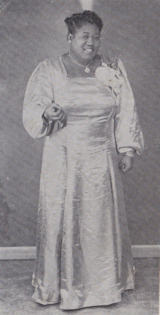  |
| Name: | The Humble Servant Gospel Singers |
| Location: | ? |
| Biography Synopsis: | ? |
| Recording career: | ? |
| Most popular song(s): | |
| Musical Influences: | |
| References / links: | |
| Images: |  |
____________________________________________________________________________________________________________________________
 A B C D E F G H I J K L M N O P Q R S T U V W X Y Z
A B C D E F G H I J K L M N O P Q R S T U V W X Y Z
To help with further browsing click on the large ‘Initial’ to return to the Early Gospel Singers Introduction, or click another initial to take you to details of more early gospel singers.
____________________________________________________________________________________________________________________________
Please Note:
As this is a continuously developing website, several entries only give the names with no biographical details. Please be patient as these entries are included for completeness, indicating the details are ‘coming soon’ and will be added when time allows.
If there are any early (pre war) gospel singers missing from the lists that you think should be included, please email the details to alan.white@earlygospel.com. Thank you in advance for your assistance.



